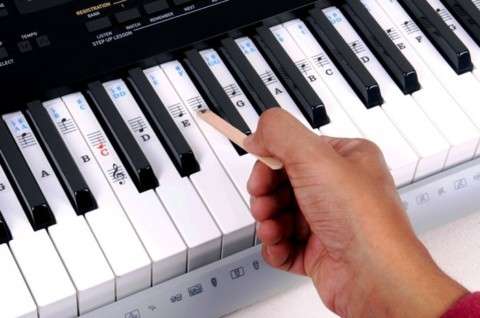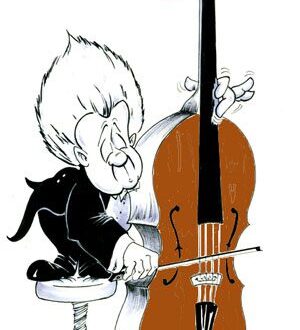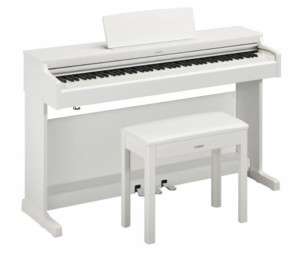
The invention of the piano: from the clavichord to the modern grand piano
 Any musical instrument has its own unique history, which is very useful and interesting to know. The invention of the piano was a revolutionary event in the musical culture of the early 18th century.
Any musical instrument has its own unique history, which is very useful and interesting to know. The invention of the piano was a revolutionary event in the musical culture of the early 18th century.
Surely everyone knows that the piano is not the first keyboard instrument in the history of mankind. Musicians of the Middle Ages also played keyboard instruments. The organ is the oldest wind keyboard instrument, having a large number of pipes instead of strings. The organ is still considered the “king” of musical instruments, distinguished by its powerful, deep sound, but it is not a direct relative of the piano.
One of the first keyboard instruments, the basis of which was not pipes, but strings, was the clavichord. This instrument had a structure similar to a modern piano, but instead of hammers, like inside a piano, metal plates were installed inside the clavichord. However, the sound of this instrument was still very quiet and soft, which made it impossible to play it in front of many people on a large stage. The reason is this. The clavichord had only one string per key, while the piano had three strings per key.
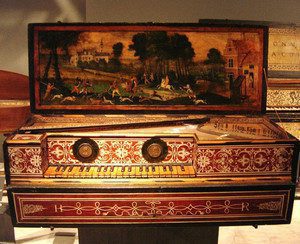
Clavichord
Since the clavichord was very quiet, naturally, it did not allow performers such luxury as the implementation of elementary dynamic shades – and. However, the clavichord was not only accessible and popular, but also a favorite instrument among all musicians and composers of the Baroque era, including the great J.S. Bach.
Along with the clavichord, a somewhat improved keyboard instrument was in use at that time – the harpsichord. The position of the strings of the harpsichord was different compared to the clavichord. They were stretched parallel to the keys – exactly like a piano, and not perpendicular. The sound of the harpsichord was quite resonant, although not strong enough. However, this instrument was quite suitable for performing music on “big” stages. It was also impossible to use dynamic shades on the harpsichord. Plus, the sound of the instrument faded very quickly, so composers of that time filled their plays with a variety of melismas (embellishments) in order to somehow “prolong” the sound of long notes.
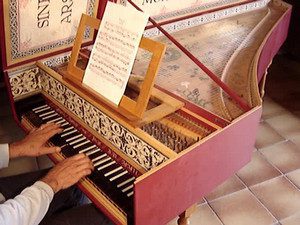
Harpsichord
Since the beginning of the 18th century, all musicians and composers began to feel a serious need for such a keyboard instrument, the musical and expressive capabilities of which would not be inferior to the violin. This required an instrument with a wide dynamic range that would be able to extract the powerful and the most delicate, as well as all the subtleties of dynamic transitions.
And these dreams came true. It is believed that in 1709, Bartolomeo Cristofori from Italy invented the first piano. He called his creation “gravicembalo col piano e forte,” which translated from Italian means “a keyboard instrument that plays softly and loudly.”
Cristofori’s ingenious musical instrument turned out to be very simple. The structure of the piano was as follows. It consisted of keys, a felt hammer, strings and a special returner. When the key is struck, the hammer hits the string, thereby causing it to vibrate, which is not at all similar to the sound of the strings of the harpsichord and clavichord. The hammer moved backwards, with the help of the returner, without remaining pressed to the string, thus muffling its sound.
A little later, this mechanism was slightly improved: with the help of a special device, the hammer was lowered onto the string, and then returned, but not completely, but only halfway, which made it possible to easily perform trills and rehearsals – quick repetitions of the same sound. The mechanism was named .
The most important distinguishing feature of the piano from previous related instruments is the ability to sound not only loud or quiet, but also to enable the pianist to make crescendo and diminuendo, that is, to change the dynamics and color of the sound gradually and suddenly.
At the time when this wonderful instrument first announced itself, a transitional era between Baroque and Classicism reigned in Europe. The sonata genre, which appeared at that time, was surprisingly suitable for performance on the piano; striking examples of this are the works of Mozart and Clementi. For the first time, a keyboard instrument with all its capabilities acted as a solo instrument, which prompted the emergence of a new genre – the concerto for piano and orchestra.
With the help of the piano, it has become possible to express your feelings and emotions through mesmerizing sound. This was reflected in the work of composers of the new era of romanticism in the works of Chopin, Schumann, and Liszt.
To this day, this wonderful instrument with multifaceted capabilities, despite its youth, has a huge impact on the entire society. Almost all great composers wrote for the piano. And, one must believe that over the years its fame will only increase, and it will delight us more and more with its magical sound.



